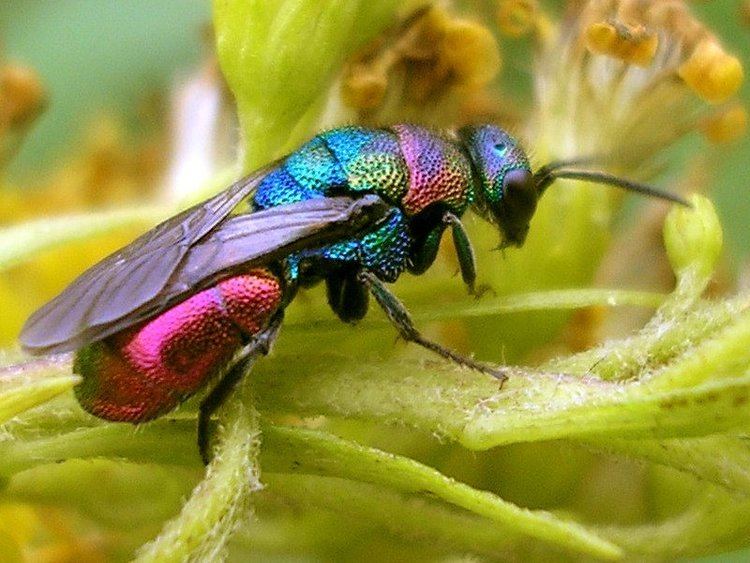Superfamily Chrysidoidea | Suborder Apocrita Scientific name Chrysidinae Rank Subfamily | |
 | ||
Similar Chrysidini, Chrysis, Cuckoo wasp, Hymenopterans, Hedychrum | ||
The subfamily Chrysidinae contains those species that are most commonly recognized as cuckoo wasps, being by far the largest and most familiar subfamily. The group contains some 3000 species in 48 genera in four tribes worldwide. They are highly sculptured, with brilliantly metallic-coloredbodies, and capable of folding their bodies over (or, more commonly, rolling into a ball) as a defensive mechanism. They are most diverse in desert regions of the world, as they are typically associated with solitary bee and wasp species, which are also most diverse in such areas.
They are generally cleptoparasites, laying their eggs in host nests, where their larvae consume the host egg or larva while it is still young, then consuming the provisions. The other subfamilies are parasitoids, of either sawflies or walking sticks.
They are among the few groups within the Aculeata that cannot sting; the ovipositor is tube-like, and used to slip the eggs into the host nests. These wasps' only defenses, therefore, are passive; the heavily sculpted integument (which reduces the risk of being bitten or stung by an angry host), and their ability to cover up their vulnerable limbs and appendages when threatened by rolling up (much like a hedgehog).
Their characteristic "scurry and fly" search pattern when looking for hosts is quite distinctive, even when seen from a distance. They land on a surface, typically either soil or wood, and scurry a short distance, in quick, hesitant spurts, with their antennae quivering vigorously as they go - and then they abruptly take off, typically only flying a short distance before landing again and repeating the maneuver.
